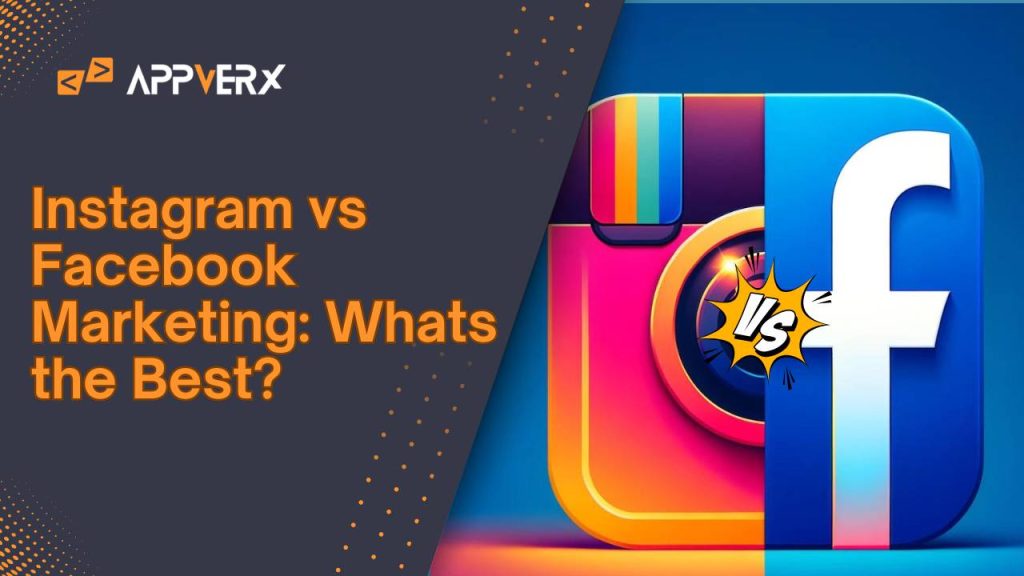In the fast-paced world of social media marketing, businesses must choose the right platforms to reach their target audience effectively. In the vast realm of social media marketing, Instagram and Facebook stand out as formidable forces, each presenting distinct features and advantages that set them apart. These two titans wield influence over the digital landscape, providing businesses with diverse opportunities to connect with their target audience and showcase their brands in a unique light. Let’s delve into the intricacies of Instagram vs Facebook marketing to unravel the better fit for your brand.
Understanding the Audience:
Understanding your audience is the cornerstone of successful marketing. On Instagram, demographics skew towards a younger audience, with vibrant visuals capturing users’ attention aged 18-34. Conversely, Facebook boasts a more extensive user base, appealing to a more diverse age range, including older demographics. Content preferences vary, with Instagram favouring visually compelling posts, while Facebook accommodates a mix of text, images, and videos.
Engagement rates play a pivotal role in content strategy. With its visually stimulating content, Instagram often sees higher engagement rates, making it ideal for brands targeting a younger demographic. Facebook, while having a broader audience, experiences slightly lower engagement rates.
Demographics
Instagram tends to pull in a demographic on the youthful side, capturing the attention of a considerable chunk of users who are below the age of 30. It’s a hotspot for individuals interested in lifestyle, fashion, and travel. On the other hand, Facebook boasts a broader demographic spectrum, encompassing a significant user base predominantly aged 30 and above. This makes it a versatile platform for targeting based on age, income, and interests.
Content Preferences
Instagram is the kingdom of visuals—photos, videos, stories, live sessions, reels, and IGTV dominate the landscape. The platform’s algorithms and features, like hashtags and the explore tab, are designed to make visually appealing content thrive. While supporting images and videos, Facebook is more accommodating to text-based content, links, and long-form posts. It’s where news articles, blogs, and detailed discussions can gain traction.
Engagement Rates
Engagement rates, including likes, reactions, shares, and comments, are crucial metrics for marketers. Instagram typically boasts higher engagement rates thanks to its visually driven content and interactive features like stories and polls. Facebook, while having a more extensive user base, often sees lower engagement rates per post due to its algorithm and the diverse nature of its content.
Strengths and Weaknesses:
Strengths:
- It is a highly visual platform perfect for brands with strong visual content.
High engagement rates, particularly among the younger demographic.
Potent influencer marketing potential.
Weaknesses:
Limited options for text content and direct linking in posts.
Less effective for B2B marketing compared to Facebook.
Strengths:
- Vast user base, making it suitable for broad-reaching campaigns.
- Advanced targeting options for ads, including interests, demographics, and behaviours.
- Effective for long-form content, driving traffic to websites, and B2B marketing.
Weaknesses:
- Generally lower engagement rates than Instagram.
- Declining organic reach necessitates a larger advertising budget.
Difference Between Facebook and Instagram Marketing:
Navigating the realms of Facebook and Instagram marketing involves understanding the nuanced disparities between the two platforms. While Facebook allows for diverse content types, Instagram thrives on visual storytelling. Determining the optimal platform hinges on harmonizing your content strategy with the specific preferences of your target audience.
Advertising on Instagram vs Facebook:
Diving into the paid advertising realm, understanding the dynamics of cost and reach is crucial. Comparing the advertising costs on both platforms, including cost-per-click and cost-per-impression, will help allocate your budget effectively. Instagram, with its focus on visual appeal, may excel for certain products, while Facebook’s extensive targeting options may yield better results for others.
Instagram vs Facebook Users:
A closer look at the user base on each platform is essential. Instagram attracts users seeking visually engaging content, including popular features like Stories, Live, Reels, and IGTV. In contrast, Facebook users engage with various content types, with a higher tolerance for long-form posts and articles.
Instagram Algorithms:
Understanding the algorithms governing content visibility is paramount. Instagram’s Explore tab uses intricate algorithms to curate content tailored to individual user preferences. Navigating these algorithms is crucial for ensuring your content reaches the right audience.
Marketing Goals:
Clarifying your marketing objectives acts as the guiding force for your overall strategy. Be it boosting brand awareness, generating leads, driving website traffic, or securing sales conversions, each platform possesses distinctive strengths in addressing these goals. Real-world examples of successful brands on both platforms can serve as inspiration for tailoring your approach to match your specific goals.
Cost Considerations:
Comparing the costs of advertising on both platforms sheds light on budget allocation. While Instagram may offer a visually captivating ad space, Facebook’s broader user base can yield more impressions. Balancing organic reach with paid advertising is critical, emphasizing the need for strategic planning.
The Verdict: Can You Have Both?
In the dynamic sphere of social media marketing services, it’s crucial to recognize that the choice isn’t strictly limited to Instagram versus Facebook. Instead, consider the benefits of utilizing both platforms synergistically. Crafting a comprehensive marketing strategy that harnesses the strengths of each platform ensures a broader reach and more diversified audience engagement. Strategic planning makes managing and optimizing your presence on both Instagram and Facebook effectively possible.
Conclusion:
Navigating the dynamic landscape of Instagram vs Facebook marketing can come with more than a one-size-fits-all solution. The “best” platform depends on your goals, target audience, and budget. By understanding each platform’s unique strengths and weaknesses, you can craft a tailored strategy that maximizes your brand’s presence and resonates with your audience across the diverse landscapes of Instagram and Facebook.
Take your social media marketing to the next level! Claim your free consultation now and receive personalized insights to supercharge your brand’s online presence. Don’t miss out – elevate your strategy today!


